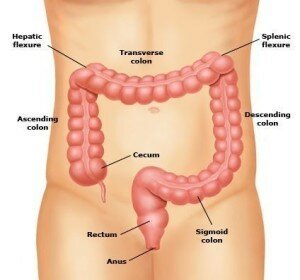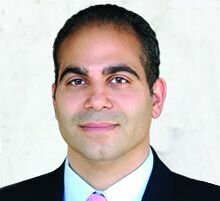 Lateral internal sphincterotomy is the preferred method of surgery for patients with chronic anal fissures and is generally used when medical therapy has failed. The procedure involves the creation of a small incision in the internal anal sphincter, one of two muscles that control the anus. Overall, lateral internal sphincterotomy has a better success rate than any medicine currently used to treat long-term anal fissures. This procedure offers reduced complications, a lower chance of fissure recurrence and better rate of success than other treatment options.
Lateral internal sphincterotomy is the preferred method of surgery for patients with chronic anal fissures and is generally used when medical therapy has failed. The procedure involves the creation of a small incision in the internal anal sphincter, one of two muscles that control the anus. Overall, lateral internal sphincterotomy has a better success rate than any medicine currently used to treat long-term anal fissures. This procedure offers reduced complications, a lower chance of fissure recurrence and better rate of success than other treatment options.
If you suffer from anal fissures, scheduling a consultation with one of our colorectal surgeons can lead to long-term resolution of your chronic condition. There is a reason why we have such a high rate of patient satisfaction – it’s because, at La Peer’s Fissure & Fistula Center of Excellence, our goal is to provide the best treatment and overall surgical experience to our patients.
What Happens During the Procedure
Lateral internal sphincterotomy is an operation performed on the internal anal sphincter muscle for the treatment of chronic anal fissures. The internal anal sphincter is one of two muscles that comprise the anal sphincter, which controls the passage of feces. The internal anal sphincter is always under tension, also known as resting pressure. If that pressure becomes too high, the patient may experience an anal spasm, and a fissure may form or an existing one may be unable to heal. The procedure helps lower the resting pressure of the internal anal sphincter, which improves blood supply to the fissure and allows for faster healing. It is a minor procedure that is performed on an outpatient basis and uses either local or general anesthesia.
The surgery can be performed using 2 techniques:
- The open technique involves making an incision across the intersphincteric groove, separating the internal sphincter from the anal mucosa by blunt dissection, and dividing the internal sphincter using scissors.
- The closed technique or subcutaneous technique involves making a small incision at the intersphincteric groove, inserting a scalpel with the blade parallel to the internal sphincter and advancing it along the intersphincteric groove, and then rotating the scalpel towards the internal sphincter and dividing it.
The fissures usually heal within 3 weeks. By undergoing this procedure, patients experience long-lasting results and reduced recurrence as compared to treatment with medicine. Recurrence rate after LIS is found in about 5% of all cases.
Request your consultation today.
Call us at 888.512.2312 to schedule an appointment or:
Complications of Fissure Surgery
Although the lateral internal sphincterotomy is a standard procedure, in the treatment of fissures, rare risks can occur.
- Minor fecal incontinence and difficulty controlling flatulence are common side effects following surgery. Persistent minor fecal incontinence has been reported in 1.2% to 3.5% of patients.
- Hemorrhage can occur, more often with the open technique, and may require suture ligation.
- Perianal abscess occurs in about 1% of closed sphincterotomies, generally in association with anal fistula caused by a breach of the anal mucosa by the scalpel. Incision and drainage of the abscess and fistulotomy are required.
Why Visit Our Surgical Center?
We are proud to see patients in a multi-million dollar facility that houses the best colorectal specialists and technologies available. Unlike large hospitals, our unique structure allows us to offer extremely personal care in a safe and controlled environment.
Lateral Internal Sphincterotomy FAQs
Q: Are there treatment alternatives to surgery?
A: Some simple treatments that may help treat fissures include: laxatives, ointments, injections of botulinum toxin, eating more fiber and drinking more fluid. In the event that these treatment options do not work, your doctor may advice you to proceed with a lateral internal sphincterotomy.
Q: Will I need to remain in the hospital after surgery?
A: You should be able to go home the same day, but your doctor will inform you about this based on your individual case.
Q: What can I expect after surgery?
A: After having anal fissure surgery, your rectal area will feel sore, especially when you go to the toilet. You will need to wash and dry the area carefully after having a bowel movement to reduce your risk of infection. You may find it helpful to have a bath.
You should also eat a healthy diet rich in fiber, fruit and vegetables and drink plenty of fluids to prevent constipation. Your doctor may prescribe laxatives to make bowel movements softer and easier to pass.
Q: When can I return to work?
A: It is usually possible to return to work after a few days depending on your type of work. Consult your physician.
Q: What happens if my fissure does not heal?
A: Your surgeon may suggest having another operation using an alternative technique, such as a fissurectomy or anal advancement flap.
Need Treatment for Anal Fissures?
Call our team of highly skilled surgeons to discuss whether a lateral internal sphincterotomy is right for you. Call us today at (888) 512-2312 or fill out our online contact form.
Please read this article on LIS from eMedicine.
Next, read about anal dilation (Lord’s Operation).









